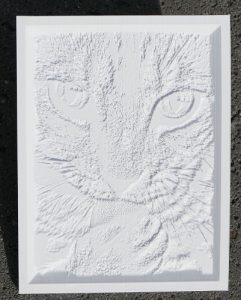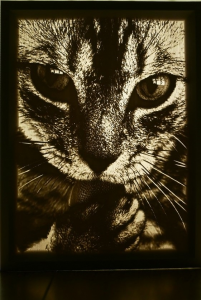Perhaps one of the most unusual and exciting art forms to emerge from the early 19th century was the lithophane. The lithophane has a rich history. The artworks were an innovation in the art world back then. The invention is generally credited by Baron Paul de Bourguignon, of Rubelles, France in 1827.
Friedrich II. after the Battle of Kolin" by Julius Schrader, original in the Museum of Fine Arts Leipzig
The earliest forms of the lithophanes in history were actually produced many years before France made them. The origin of the lithophanes came from China. Chinese potters decorate floral designs in delicate walls of eggshell-thin porcelain vases. There is only a little historical evidence in existents indicating the exact origin of this unique technique in China. But the certain thing is that the technique was used before for the Europeans discovered them.
The Europeans did not only use the technique, but they also evolved the concept to a whole new level. Where the concept started with simple floral art, the Europeans made complex and detailed pieces of art. A wide variety of images appeared on the magical lithophanes. The pieces of art contained delightful replicas of landscapes, reproductions of famous portraits and popular paintings, dramatic religious art, and scenic panoramas.
Porcelain etching self-portrait done for wide public distribution by Samuel Colt 1855. The concept wasn’t as simple to execute. The sheer artistry of high order was required to master the art of lithophanes. The very first lithophanes were carved entirely by hand. But over time, the artist reasoned that molds could be made, to specialize the art. These molds were made with a layer of wax placed on a plate of glass. This provided significant transparency for the artists. Because the thickness of the wax stopped the light from passing through, each scratch in the wax became a little lighter. In this way, the artists could scratch a road from dark to light.
The artist first sketched the conceived work on the white wax. When he was satisfied he started with carving into the wax. The artist worked with knives and polishers to form the sculpture. He needed to take care of every little detail within the design. When every detail was perfect, the wax was made into a plaster cast. This was the shape used for the porcelain object. A moist porcelain paste was then pressed into the mold in a professional manner. This perfectly filled every detail of the scratched design. Due to the casting process, every fine detail is revealed by the pasta.
But like all trends, the popularity of the lithophanes decreased trough time. The light slowly faded away from these pieces of art. Until … recently, with the arrival of the 3D printers. Countless new creations and ways are being devised, to give new light to this wonderful piece of art once again! Check out some 3D-printed lithophanes on our Instagram.


3D printed lithophane made with the ItsLitho Lithophane Maker
The word ‘lithophane’ is derived from the Greek language: ‘lithos’ means stone or rock and ‘phainein’ means to appear. Literally, lithophane means ‘appearance in stone’

Free online designing software that helps you create high-quality 3D printed lithophanes. It’s a simple yet powerful cross-platform lithophane maker.